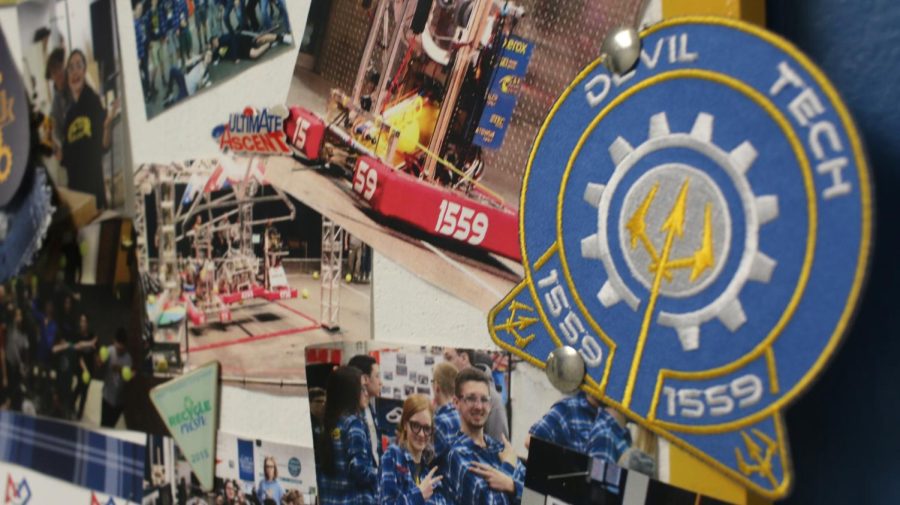Victor’s Devil Tech Talent
March 11, 2022
When I first heard of Victor Robotics, my first instinct was BattleBots, the TV show in which robots destroy each other. I was wondering whether robotics really did involve sawblades and torn metal, so I went to a meeting to investigate.
The team was hard at work on their latest project. With highly sophisticated software, the Victor Devil Tech Robotics team is currently working on what may be one of their most advanced machines yet. To learn more about it, I sat down with Devil Tech Lead Scarlett Ulatowski.
Ulatowski is in charge of system integration and works with advisor Mr. Fleckenstein, the founder of the program at Victor and retired Tech teacher.
The Victor Robotics program is based on a challenge sent out by the international organization, FIRST, in January. This challenge involves the “game,” which contains some kind of competition for the robot to participate in. The team is given 7 weeks to design and build a robot capable of winning the competition. This year’s game is called “Rapid React” and involves a large robot that is capable of shooting 9” tennis balls into a hoop and climbing monkey bars.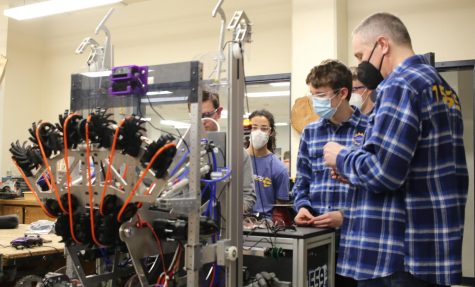
The challenge itself includes two hoops, with the top awarding 2 points and the bottom awarding a single point. There are also additional bonuses for the robot having certain characteristics, such as an autonomous drive system. The Devil Tech robot will compete against other teams, including Fairport’s Robotics Team and international teams. The team with the most points will win and move on in the competition.
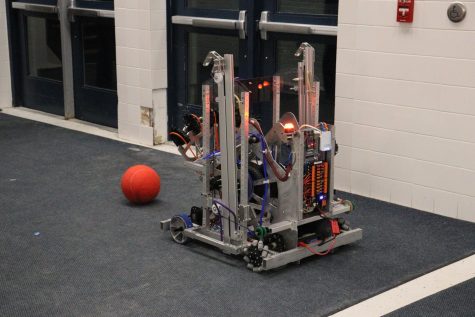
To manage the large list of requirements expected for the robot, the Devil Tech team splits into multiple groups. These groups include the chassis (body), intake system (tennis ball shooter), climber, and vision systems.
According to Ulatowski, one of the most important aspects of group work is guaranteeing steady communication between teams. Neglecting communication can lead to frustration and great amounts of stress.
Designing such a complex robot in such a quick amount of time is tricky, and Ulatowski and her team have faced a lot of challenges. One of the greatest physical challenges has been the weight limit of 125 pounds; it’s been an issue every year due to heavy metals and motors. The small 7 week period also shares in the pressure, requiring the team to meet for many hours multiple times a week in order to stay on track. 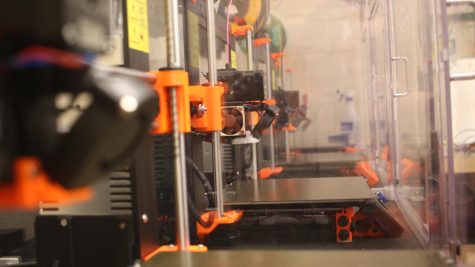
At the moment, the team is running slightly behind but Ulatowski is confident that they will finish the robot by the competition on March 10th, at RIT’s Gordon Field House. The seniors of the team are preparing for their last competition, as the second is during this year’s senior trip.
Since the senior drivers of the robot can’t attend, this has created an opportunity for newer members to shine. For example, Cody Perez has joined the Drive Team and has been performing exceptionally well.
As for the future of the team, it’s currently uncertain. Mr. Fleckenstein, a universally appreciated advisor, is retiring and there hasn’t been any word as to who will replace him. Ulatowski says that they are looking for some kind of change; she hopes to learn from previous mistakes. The team hasn’t made it to the FIRST 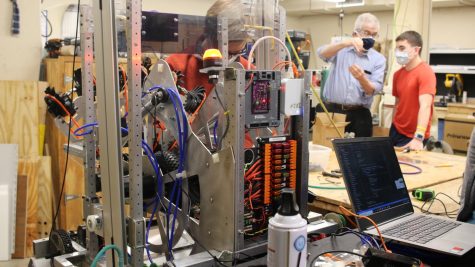 Championship since 2017. It’s the highest level of competition and serves as a great accomplishment for FIRST teams. The team is confident that they are capable of doing it in the future and have maintained a sense of optimism.
Championship since 2017. It’s the highest level of competition and serves as a great accomplishment for FIRST teams. The team is confident that they are capable of doing it in the future and have maintained a sense of optimism.
Concerning the BattleBots, unfortunately, the team does not participate in brutal combat. In fact, FIRST competitions have penalties for damaging other robots. Ulatowski says that the team has “a lot of interest in pursuing [Battlebots] in the future,” there is some hope that the flannel-themed team may one day appear in combat after 15 years of competition at Victor.


